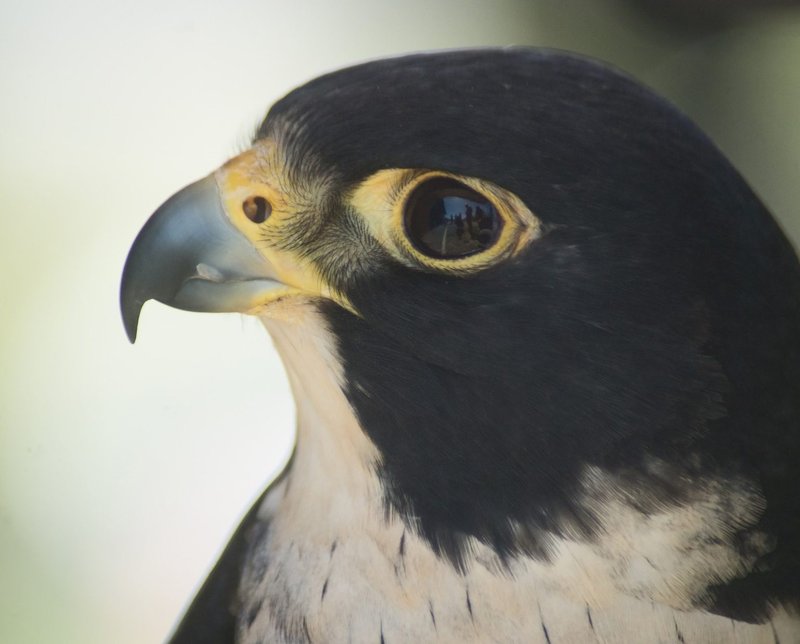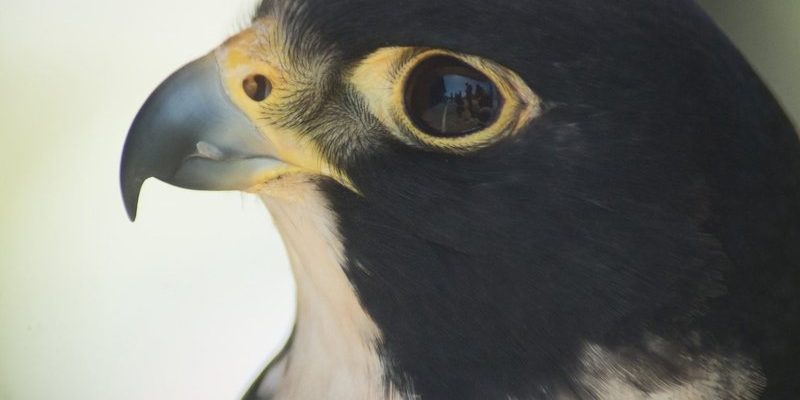
When you think of speed and grace, the falcon might be the first bird that comes to mind. These incredible birds of prey are not only known for their breathtaking flight but also for their hunting prowess. Imagine a bird that can swoop down at over 200 miles per hour, catching its next meal mid-air. Isn’t that fascinating? Falcons are often seen as symbols of freedom and power, captivating birdwatchers and nature enthusiasts alike.
But there’s so much more to these raptors than just their speed. Falcons belong to the family Falconidae and can be found on every continent except Antarctica. They’ve adapted to various habitats, from deserts to city skies, demonstrating remarkable versatility. If you’ve ever spotted one high above, gracefully gliding with wings spread wide, you might have wondered about their lives, habits, and unique characteristics. Let’s dive deeper into what makes falcons truly remarkable.
Physical Characteristics of Falcons
Falcons come in a wide range of sizes, shapes, and colors. The smallest species, the American kestrel, is about the size of a sparrow, while the largest, the Gyrfalcon, can be as large as a goose. Most falcons have pointed wings and a sleek body, designed perfectly for speed. Their sharp, hooked beaks are essential for tearing into their prey, and their keen eyesight allows them to spot potential meals from great distances.
Here’s a quick look at some important physical traits:
| Species | Wingspan | Weight | Diet | Colors |
| American Kestrel | 20-24 inches | 3.5-6 ounces | Insects, small mammals | Rusty orange, blue, white |
| Peregrine Falcon | 29-43 inches | 1.5-3.5 pounds | Birds, small mammals | Gray, white, black |
| Gyrfalcon | 48-60 inches | 2-4.5 pounds | Birds, small mammals | Gray, white, brown |
This table illustrates the diversity among falcon species. Their striking colors can help them blend into various environments, whether it’s the dappled sunlight of a forest or the rugged cliffs of a coastline.
Habitat and Distribution
Falcons are incredibly adaptable birds. You can find them soaring over mountains, nesting in cliffs, or even hunting in urban areas. Their ability to thrive in diverse habitats—from the icy tundras to bustling cities—shows how resourceful they are. Most falcon species prefer open areas where they can easily spot their prey, so you’ll often find them in meadows, grasslands, and along coastlines.
Interestingly, some falcons have specific nesting habits. For instance, the Peregrine Falcon often chooses cliff edges or tall buildings for nesting. They prefer high vantage points where they can watch over their territory. On the other hand, some falcons create nests in tree hollows or scrape out a shallow depression on the ground. These choices reflect their need for safety and a good hunting ground.
Diet and Hunting Behavior
Falcons are skilled hunters with a diet mainly consisting of birds, small mammals, and insects. Their keen eyesight helps them spot their prey from high in the sky, and when they decide to dive, it’s like watching a fighter jet go into a steep dive. Their speed and agility give them an edge, allowing them to catch prey mid-flight, which is truly a spectacular sight.
One fascinating aspect of their hunting behavior is how they employ different strategies. Peregrine Falcons, for instance, are known for their “stoop” technique, where they dive from great heights, using gravity to gain incredible speed. This method often results in a successful catch, making it one of the most effective hunting strategies in the bird world. Other falcons may use a more stealthy approach, swooping low to surprise their target.
Reproduction and Life Cycle
Falcons usually mate for life, creating strong bonds that are essential for raising their young. During breeding season, males perform elaborate aerial displays to attract females. These displays can include dives, swoops, and showcasing their hunting skills. Once a pair of falcons has bonded, they will usually return to the same nesting site each year.
Once the female lays her eggs, which typically ranges from 2 to 6, both parents take turns incubating them. After about 30 to 35 days, the eggs hatch, and the chicks are cared for by both parents. For the first few weeks, falcon chicks are helpless and rely entirely on their parents for food and protection. As they grow, they become more independent, eventually learning to hunt on their own.
Conservation Status
Many species of falcons have faced challenges due to habitat loss, hunting, and environmental pollution. For example, the Peregrine Falcon was once endangered due to the use of pesticides like DDT, which harmed their ability to reproduce. Conservation efforts, including banning harmful pesticides and protecting habitats, have significantly helped in the recovery of their populations.
Today, while some falcon species are thriving, others remain at risk. Organizations and wildlife agencies are actively working to monitor and protect these magnificent birds. If you ever spot a falcon soaring through the sky, remember the incredible journey they’ve made and the importance of preserving their habitats.
Interesting Facts About Falcons
- Falcons are among the fastest animals on the planet, with the Peregrine Falcon capable of reaching speeds over 240 mph during its hunting dive.
- Some falcon species, like the American Kestrel, can see ultraviolet light, allowing them to detect urine trails left by prey.
- Falcons have a unique feature in their beaks, called a tooth, which helps them kill prey quickly.
- The female falcon is generally larger than the male, which is common in many bird of prey species.
FAQ
What is the most common species of falcon?
The most common species of falcon varies by region, but the American Kestrel is widely recognized across North America. These small falcons are often seen perched on telephone wires or hovering in search of prey, making them a familiar sight for many.
How fast can a falcon fly?
Falcons are renowned for their incredible speed. The Peregrine Falcon holds the title for the fastest bird, diving at speeds that can exceed 240 mph! When flying horizontally, they can reach speeds of 40-60 mph, depending on the species. Their specialized wing structure allows them to maneuver quickly while chasing down prey.
Are falcons social birds?
Falcons are generally solitary except during mating season. They tend to establish and defend their own territories. However, you might observe groups of falcons during migrations or when hunting in areas with abundant food. Their behavior can vary, but most prefer a degree of solitude outside of breeding.
What do falcons eat?
Falcons are carnivorous and primarily feed on small to medium-sized birds, insects, and occasionally small mammals. Their diet varies depending on their habitat and available prey, but their sharp talons and beaks make them effective hunters.
Where do falcons build their nests?
Falcons typically build their nests in high places, such as cliffs, trees, or tall buildings. The exact nesting site can depend on the species and availability of suitable locations. Some falcons, like the Peregrine Falcon, may even use abandoned nests from other birds.
How long do falcons live?
Falcons generally have lifespans that can range from 10 to 15 years in the wild, though some can live longer with ideal conditions and care in captivity. The ages may vary between species, with some larger falcons having longer lifespans due to fewer natural predators.
Can falcons be trained?
Yes, falcons can be trained, and this practice is known as falconry. It involves training falcons to hunt in cooperation with humans. Falconry has a long history and requires a deep understanding of the bird’s behavior and needs. Many falconers build strong bonds with their birds, leading to effective and successful hunting experiences.
What is the difference between a hawk and a falcon?
While both hawks and falcons belong to the raptor family, they have distinct differences. Falcons tend to be smaller and more agile than hawks, with long, pointed wings and a tapered tail. Falcons also have a different hunting technique, often diving at high speeds to catch prey, while hawks may rely more on their strength in a direct attack.
Are falcons migratory birds?
Many falcon species are indeed migratory, traveling long distances between breeding and wintering grounds. For example, the Peregrine Falcon migrates from its breeding territories in North America to warmer regions in the winter. Migration patterns can vary widely among species.
What are the threats to falcons today?
Falcons face various threats, including habitat destruction, climate change, and pollution. Pesticides and other chemicals can impact their reproduction and food sources. Conservation efforts are crucial in protecting their habitats and ensuring their populations remain stable.
Can you see falcons in urban areas?
Absolutely! Many falcon species have adapted well to urban environments. In fact, the Peregrine Falcon often nests on tall buildings, making cities a common place to observe these incredible birds. Their ability to thrive in urban settings is a testament to their adaptability.
How can I help protect falcons?
You can help protect falcons by getting involved in local conservation efforts, supporting wildlife organizations, and becoming more aware of your environmental impact. Simple actions like reducing pesticide use in your garden, creating wildlife-friendly habitats, and advocating for conservation initiatives can make a significant difference in ensuring the survival of these magnificent birds.

